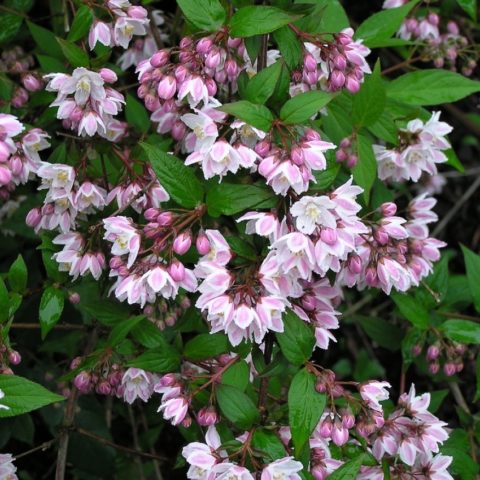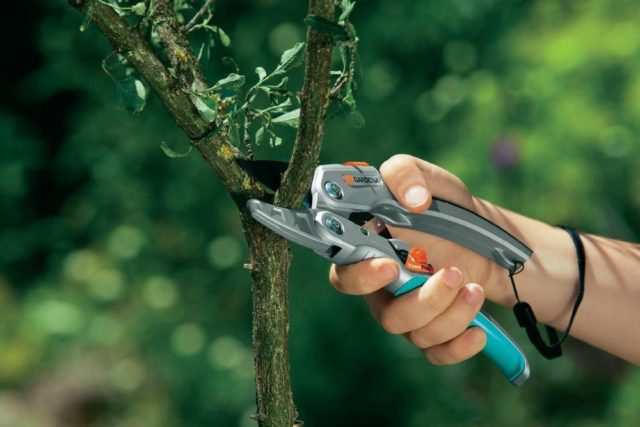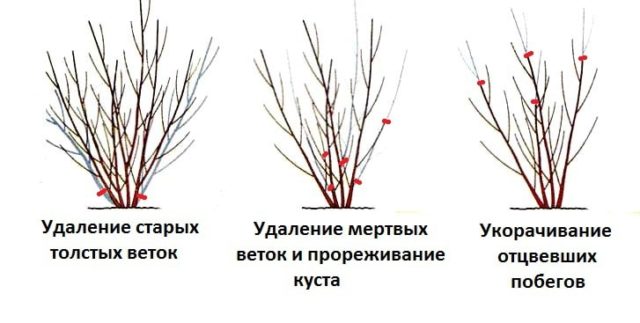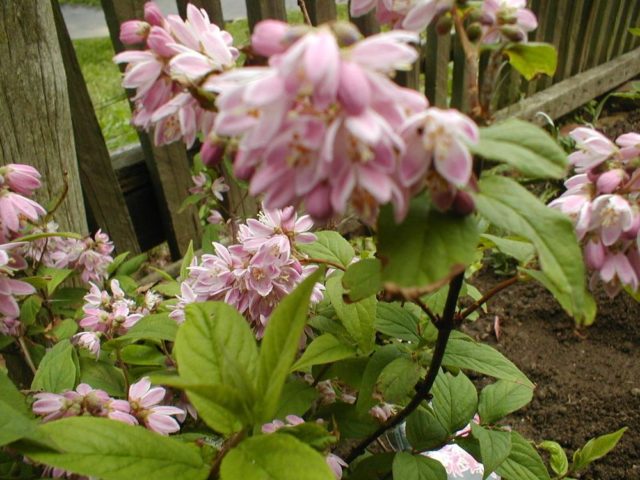Content
Pruning deytion is a mandatory step in growing a shrub. It is a fast growing species, it reaches 2-3 m in height in 1-2 years and forms a huge number of shoots. If you do not carry out timely and regular cleaning of the crown, the plant will very quickly overgrow and lose its ability to bloom.
Why cut off the action
Pruning of any type of flowering shrub is aimed at creating abundant flowering and creating a beautiful crown. Competent rejuvenating pruning in autumn often helps save dying bushes.
The following types of vegetative cleansing are used for action:
- Annual sanitary. Task: cut out frozen, old, sick and crooked branches that can become a source of disease.
- Summer, at the end of flowering. Objective: to lighten the bush and stimulate good aeration.
- The ultimate formative. Task: leave last year's shoots and remove the shoots of the current year, at the same time set the desired shape to the bush.
- Rejuvenating as the bush ages. Task: to form a new crown from young strong shoots from the mother stump.
When to cut off the action
Experienced gardeners carry out routine pruning of the action for the winter, spring and at the end of flowering. The timing of trimming directly depends on its task:
- Wellness, or sanitary, pruning is carried out in early spring, at the beginning of the growing season. At this stage, about 25% of all shoots are removed. The spring procedure leads to the formation of new strong shoots.
- In July, old inflorescences are removed. The generative parts are removed before the first lateral branch, leaving only a strong, developing growth.
- In September, autumn pruning is carried out before the onset of cold weather. This will give the bush time to lay new buds and the foundation for abundant flowering for the future.
- Rejuvenating pruning "on a stump" is also carried out in the spring at 6-8 years of life of the bush. Re-flowering begins 2-3 years after cleaning.
Preparation of tools and materials
A graceful pruning action is impossible without quality gardening tools and wound care products. The main tool for pruning flowering shrubs is the pruner. It easily handles lignified branches up to 50 mm thick. There is no need for a long-handled lopper either, because the shoots are within reach.
To avoid pinches and scoring, the secateurs must be sharpened well. This will make it possible to make an even cut that heals very quickly.
If the bush is healthy, the cutting part of the pruner is once treated with kerosene before the pest control procedure. If there are branches affected by rot on the bush, the pruner blade is wiped with kerosene after removing each diseased branch. It is imperative to store garden varnish for the treatment of wounds.
How to trim the action in spring
In the first spring after planting, it is undesirable to touch the bush in order to allow the plant to adapt in a new place and form a decent root system.
Action forms flowers on short lateral shoots of last year's growth, which is why the first serious pruning is done in two-year-old bushes.Usually, the operation is performed in March-April, depending on the region. They are guided by the swelling of growth buds. They show where the new side shoots will grow to help you prune correctly. A radical shortening of last year's growths is done in such a way as to leave 2-3 strong buds.
During pruning, the pruning shears are wound by the branch and cut off at an angle of 45 °. Wounds are treated with garden varnish.
Before pruning, an audit is carried out for the presence of diseased and damaged branches, they are removed first. During spring thinning, branches that are too old are also pruned.
The correct scheme for trimming the action in the spring for beginners will help to carry out the maximum molding neatly.
How to properly trim the action after flowering
Cleaning the bush immediately after flowering stimulates the formation of new branches. The next year, such a plant produces large inflorescences abundantly. Pruning shoots after flowering is carried out one third from the top to well-developed buds.
Pruning action in autumn
Heavy autumn pruning will result in new, healthy stems right from the underside of the crown. Autumn thinning is carried out in September, before the onset of severe cold weather. The lack of thickening will help the bush to accumulate more nutrients for the winter and distribute them correctly.
Autumn manipulations include measures to remove this year's feeble growths. To do this, in adult bushes, 6-7 last year's shoots are left, which will give buds in the spring. They cut off the top by one third. Old branches and frail growth of this year are removed completely.
When the crown is formed decoratively, you need to cut off the action for the winter. Pay special attention to:
- shoots growing inside the bush;
- zero thin branches extending from the root;
- shoots growing to the sides.
In the 7-8 year old bushes, radical pruning is carried out, during which a new crown is formed. To do this, all branches are removed in the spring to the base, the wound is treated. Over the summer, the stump will give young shoots. In autumn, 5-6 of the strongest branches are selected from them, shortened by 1/3, the remaining trunks are removed. After pruning, the deytion usually leaves sprouts 50-60 cm high. After radical rejuvenation, the deytion will miss one flowering season, but will form an attractive crown in the second year.
The radical crop of the action in the fall is shown in the video:
Taking care of action after pruning
Spring and autumn pruning ends with the obligatory application of complex mineral fertilizers - Master Valagro, Planton H. Nutrients will provoke the growth of new shoots and prevent them from stretching and thinning. After feeding, the soil around the bush is watered and mulched with sawdust, peat, humus.
Conclusion
Pruning deutsium will help maintain the decorative appeal of the shrub. You won't have to take drastic measures. The main rule that should be observed when shortening shoots is to protect valuable second years.












